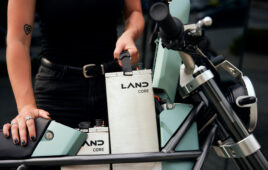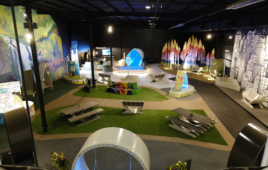The National Science Foundation and the Consortium for Ocean Leadership plan vast undersea observing networks to provide never-before-seen views of the world’s oceans.

An Ocean Observatories Initiative regional scale node will be located at the deep sea Axial Volcano and Hydrate Ridge. Credit: University of Washington.
Recently, the National Science Foundation (NSF) and the Consortium for Ocean Leadership (COL) signed a cooperative agreement that supports the construction and initial operation of the Ocean Observatories Initiative (OOI). OOI will provide a network of undersea sensors for observing complex ocean processes such as climate variability and ocean circulation and acidification at several coastal, open-ocean, and seafloor locations. Continuous data flow from OOI sensors will be integrated by a sophisticated computing network and will be available to scientists, policy makers, students, and the public.
Advanced ocean research and sensor tools are much improved over past techniques. Remotely operated and autonomous vehicles go deeper and perform longer than submarines. Underwater samplers do in minutes what once took hours in a lab. Telecommunications cables link experiments directly to office computers on land. At sea, satellite uplinks shuttle buoy data at increasing speeds. Sited in critical areas of the open and coastal ocean, OOI will change the rate and scale of ocean data collection. The networked observatory will focus on global, regional, and coastal science questions. It will also provide platforms to support new kinds of instruments and autonomous vehicles.

Here are the geographic locations of the Ocean Observatories Initiative components. Credit: Center for Environmental Visualization, University of Washington.
The five year construction phase began in October 2009. The first year will include a range of construction projects including production engineering and prototyping of key coastal and open-ocean components – moorings, buoys, and sensors. The first year will also award the primary seafloor cable contract, complete a shore station for power and data, and software development for sensor interfaces to the network. Subsequent years will focus on the completion of coastal, deep-ocean, and seafloor systems with initial data flow scheduled for early 2013 and final commissioning of the full system in 2015.
Other organizations involved in the OOI include:
• Woods Hole Oceanographic Institution (WHOI) and its partners Oregon State University and the Scripps Institution of Oceanography are responsible for coastal and global moorings and their associated autonomous vehicles. Raytheon will also serve as a WHOI partner and provide project management and systems engineering support.
• The University of Washington is responsible for cabled seafloor systems and moorings on the Juan de Fuca tectonic plate.
• OOI’s cyber-infrastructure component is being implemented by the University of California at San Diego.
The National Science Foundation
www.nsf.gov
Consortium for Ocean Leadership
www.oceanleadership.org
::Design World::
Filed Under: Green engineering • renewable energy • sustainability





Tell Us What You Think!